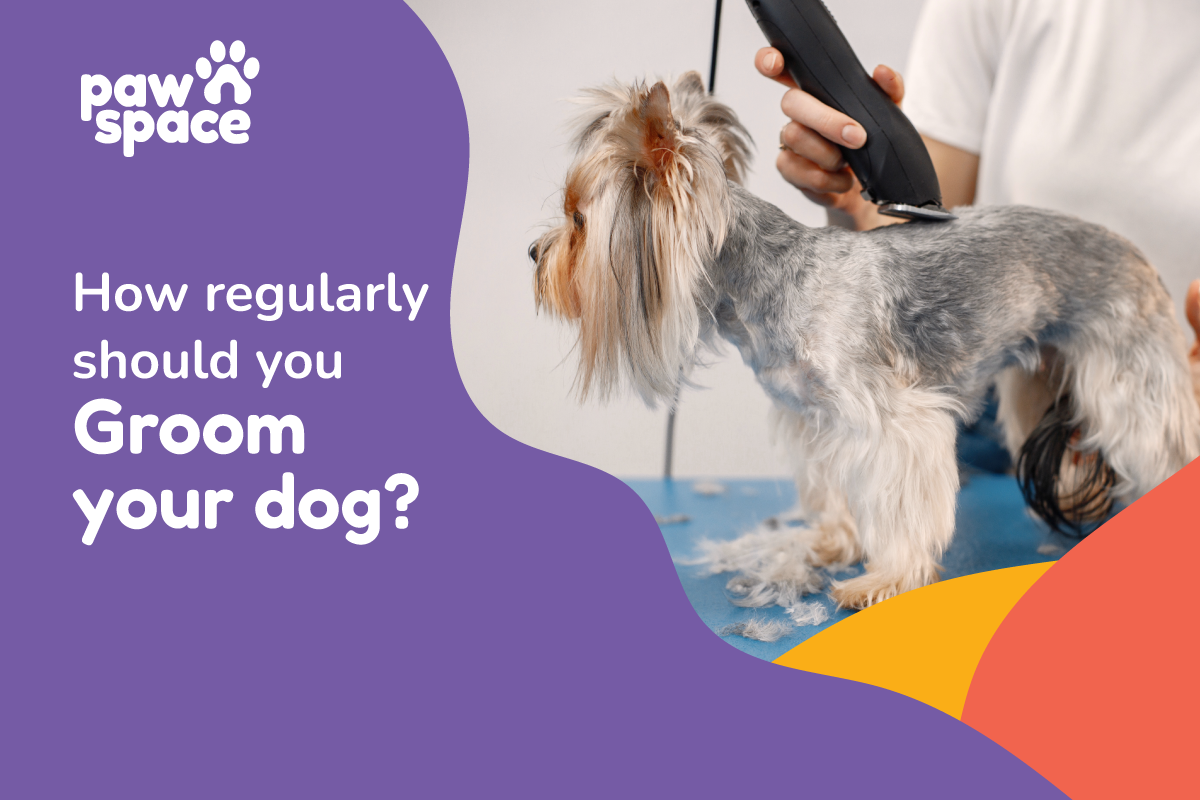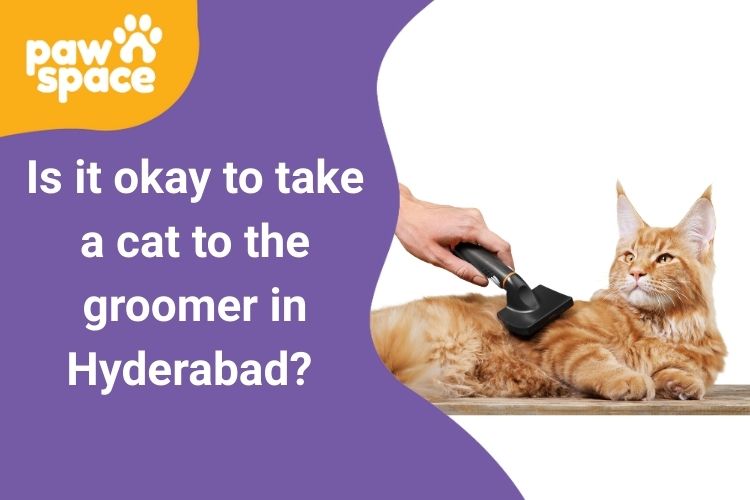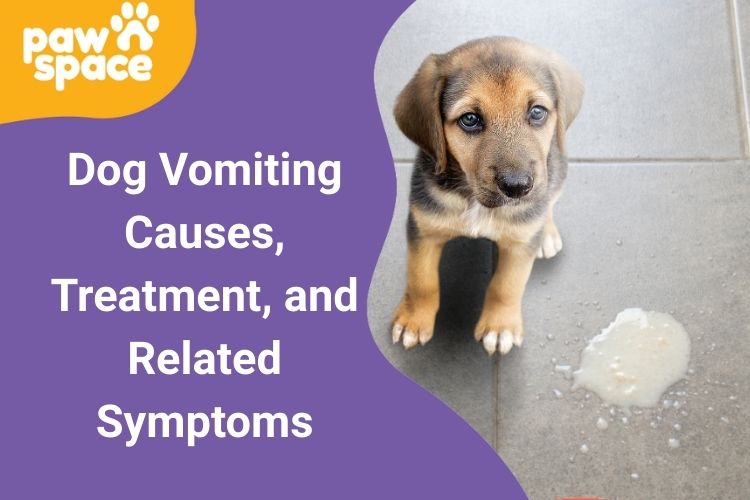Pet grooming in Bangalore is more than just keeping your dog looking good; it’s essential for their health and comfort. This blog explains how often you groom a dog based on coat type, lifestyle, and age. Learn the ideal schedule for brushing, bathing, nail trimming, and professional grooming, plus tips to keep your pup clean, happy, and healthy year-round.
Table of Contents
Toggle- Introduction
- How often You Groom a Dog?
- 1. Frequency of Brushing by Coat Type
- 2. Bathing Schedule
- 3. Trimming Nails
- 4. Ear Cleaning
- 5. Dental Care
- 6. Eye and Face Cleaning
- 7. Anal Gland Expression
- 8. Professional Grooming
- Pawspace: The safe space for your pets
- Why Choose Pawspace?
- Conclusion
- FAQs
- 1. How often do I groom my dog?
- 2. Do I have to take my dog to a professional to groom them, or can I do it at home?
- 3. How can I tell if my dog requires more frequent grooming?
- 4. What equipment do I need to groom at home?
- 5. Do short-haired dogs really need to be groomed?
Introduction
Regardless of whether your pup is a fluffy Pomeranian or a sleek Labrador, how often you groom your dog plays a critical role in their care regimen. It’s not merely for looks: grooming prevents skin infection, matting, parasites, and overgrown toenails. Regular grooming also reinforces the relationship between you and your pet and makes it easier for you to identify potential signs of illness such as lumps, rashes, or ear infections.
But how frequently should you groom your dog? The frequency varies with many factors, including activity level, health, breed, and coat type. In this blog, we’ll categorise grooming frequency by coat type and grooming task so that you can develop a program that makes your dog look and feel their best.
Whether your dog gets a full trim every 6-8 weeks or just needs touch-ups around the feet, dog hair clippers are likely to come in handy at home. You might be tempted to grab the same trimmers used in your household for beards or personal grooming, but that’s not a great idea
How often You Groom a Dog?
1. Frequency of Brushing by Coat Type
Brushing is perhaps the most critical grooming activity. Brushing takes loose hair off, spreads natural oils, prevents matting, and maintains a healthy coat. Here’s how frequently to brush depending on coat type:
- Short-haired breeds (Boxers, Beagles): Brush weekly to shed dirt and minimise shedding. These breeds have easy-to-maintain coats but still need regular brushing to ensure skin stimulation and dead hair removal.
- Long-haired breeds (e.g., Afghan Hounds, Havanese): Daily brushing is best to avoid tangles and mats. Long hair is more susceptible to knotting, particularly behind the ears, under the legs, and around the tail.
- Double-coated breeds (e.g., Golden Retrievers, Huskies): Brush every day in shedding times (spring and autumn), and at least 2–3 times per week otherwise. These dogs shed a lot and need intensive brushing to eliminate the undercoat.
- Curly or wavy fur (e.g., Poodles, Bichon Frise): Regular daily brushing is advisable to avoid matting. Their hair is constantly growing and can tangle easily if not groomed.
- Wire-haired breeds (e.g., Terriers): Brush 2–3 times weekly and hand-strip occasionally every few months to shed old hair and keep the coat texture in check.
- Silky coats (e.g., Yorkies, Shih Tzus): Brushing and combing every day are necessary to prevent tangles and preserve shine. These coats can easily mat and need regular care.
2. Bathing Schedule
Bathing is essential to keep your dog clean and manage odor, yet overbathing can dry out the skin and strip natural oils. A dog-specific shampoo should be used, and the following general guidelines applied:
- Short-haired dogs: Every 6–12 weeks unless they get really dirty or stinky.
- Long-haired or curly-haired dogs: Every 4–6 weeks to maintain a clean and manageable coat.
- Dogs with oily coats (such as Basset Hounds): Every 4–6 weeks to maintain oil control and deodorising.
- Outdoor or active dogs: May require more frequent bathing based on level of exposure to dirt, mud, or allergens.
- Dogs with skin disorders: Consult with your vet, who may recommend medicated baths on a regular basis.
Always towel your dog after a bath, particularly in winter or if he has a thick coat.
3. Trimming Nails
Long nails hurt, lead to posture problems, and even joint issues. Most dogs require a nail trim every 3–4 weeks, but this depends on activity level and pavement walked on. Dogs that are walked on pavement might wear down their nails naturally, whereas indoor dogs might require more frequent trimming.
Indications that your dog’s nails are too long are:
- Clicking noises on hard surfaces
- Curling of the nails beneath the paw
- Not wanting to walk or limping
- Clip using a dog-specific nail clipper or grinder, and avoid cutting the quick (blood vessel within the nail). If in doubt, have your vet or groomer demonstrate.
4. Ear Cleaning
Ear cleaning keeps infections away, particularly in floppy-eared or wax-prone breeds. How often varies according to breed and ear type:
- Floppy-eared breeds (e.g., Cocker Spaniels): weekly check and cleaning.
- Erect-eared breeds (e.g., German Shepherds): 2–4 weeks.
- Ear-infection-prone breeds: Ask your vet for guidance.
- Use a vet-recommended ear cleaner and cotton balls. Never insert anything deep into the ear canal, and never use Q-tips.
5. Dental Care
Dental care is easily neglected but is important to overall health for your dog. Not taking care of your dog’s teeth can cause gum disease, lost teeth, and even heart or kidney issues.
- Brushing: At least 2–3 times a week, but daily if possible.
- Dental chews: As an add-on, not a replacement for brushing.
- Vet check-ups: Annual dental check-ups and cleanings as necessary.
- Use a toothbrush and toothpaste specifically designed for dogs. Never use human toothpaste, as it will be poisonous for dogs.
6. Eye and Face Cleaning
Certain breeds, particularly those with facial folds or protruding eyes (e.g., Pugs, Bulldogs), need to be cleaned regularly on the face to avoid tear stains and infections.
- Tear stain removal: Clean daily with a damp cloth or wipe approved by your vet.
- Facial folds: Clean 2–3 times a week to avoid a buildup of moisture and irritation.
7. Anal Gland Expression
Some dogs naturally express their anal glands during defecation, but some can use assistance. Indications your dog needs expression are scooting, licking the back, or having a pungent fishy smell.
- Frequency: Every 1–2 months, or as necessary.
- Who should do it: Numerous pet parents leave it to vets or professional groomers.
8. Professional Grooming
While several grooming procedures can be performed at home, there are certain dogs that appreciate a visit from a professional groomer from time to time:
- Curly coat breeds (e.g., Poodles): Every 4–6 weeks for cuts and upkeep.
- Long-haired breeds: Every 6–8 weeks for trimming and thorough brushing.
- Short-haired breeds: Perhaps only require occasional visits for nail clipping or deshedding therapy.
- Professional groomers are also likely to catch early signs of skin problems, ear infections, or parasites.
Pawspace: The safe space for your pets
We at Pawspace are dedicated to providing top-notch care and companionship for your
beloved pets. Honoured to be India’s biggest pet-centred community! Created and curated by pet parents.
Our services include pet grooming, pet boarding, pet sitting, doorstep dog training, dog walking, pet taxi/cab, pet relocation, pet funeral, cat grooming, etc.
Why Choose Pawspace?
- Available on demand for pet parents everywhere
- Verified caregivers with a 5-point checklist & rigorous background checks
- Be at peace by receiving regular updates through chats, photos and videos
Conclusion
There is no single answer to how often you need to groom your dog, it will vary by breed, coat type, lifestyle, and health. But having a regular grooming routine with your dog in mind will keep them clean, comfortable, and healthy. Grooming regularly also deepens the bond and allows you to keep an eye on your dog’s overall health.
Whether you groom at home or see a pro, the secret is consistency. A clean dog is not only nicer to have around: they’re also healthier, happier, and more confident.
FAQs
1. How often do I groom my dog?
All dogs can be bathed every 4-8 weeks, depending on coat type and lifestyle. Overbathing dries the skin, so use dog shampoo and seek the advice of your veterinarian if uncertain.
2. Do I have to take my dog to a professional to groom them, or can I do it at home?
Brushing and bathing can be accomplished at home, but dogs with intricate coats or grooming requirements may need professional attention every 4–8 weeks.
3. How can I tell if my dog requires more frequent grooming?
Signs include matting, stench, heavy shedding, dirty ears, or long toenails. If your dog appears uncomfortable or itchy, it is time for a grooming session.
4. What equipment do I need to groom at home?
Minimum equipment is a brush that is appropriate for your dog’s coat, clippers or grinder for nails, dog shampoo, ear cleaner, and toothbrush with dog-safe toothpaste.
5. Do short-haired dogs really need to be groomed?
Yes! Short-haired dogs can also benefit from regular brushing, nail trimming, and the occasional bath to keep the skin healthy and minimise shedding.

















